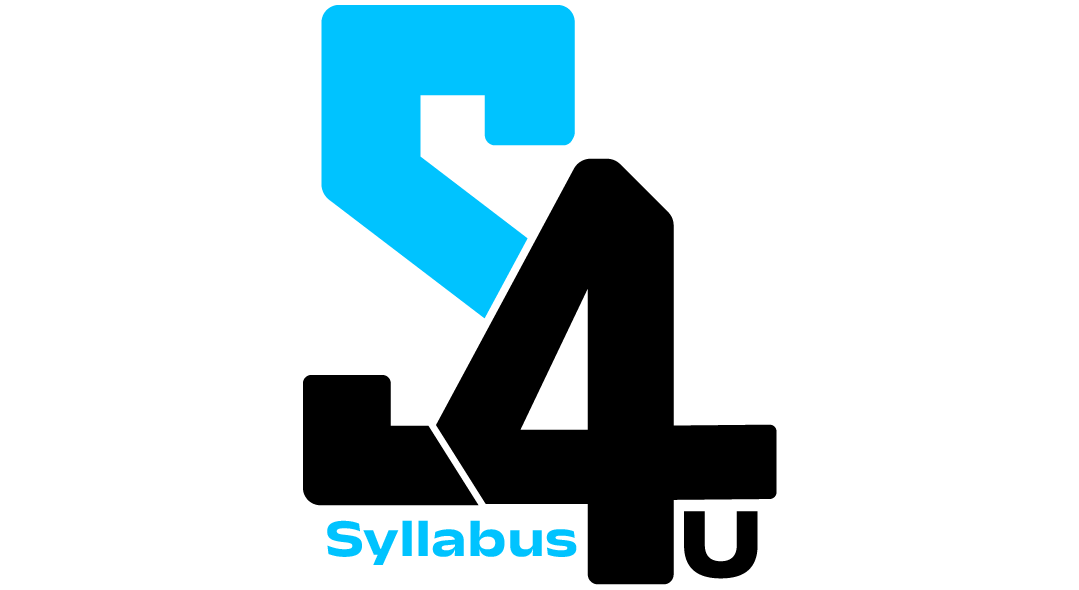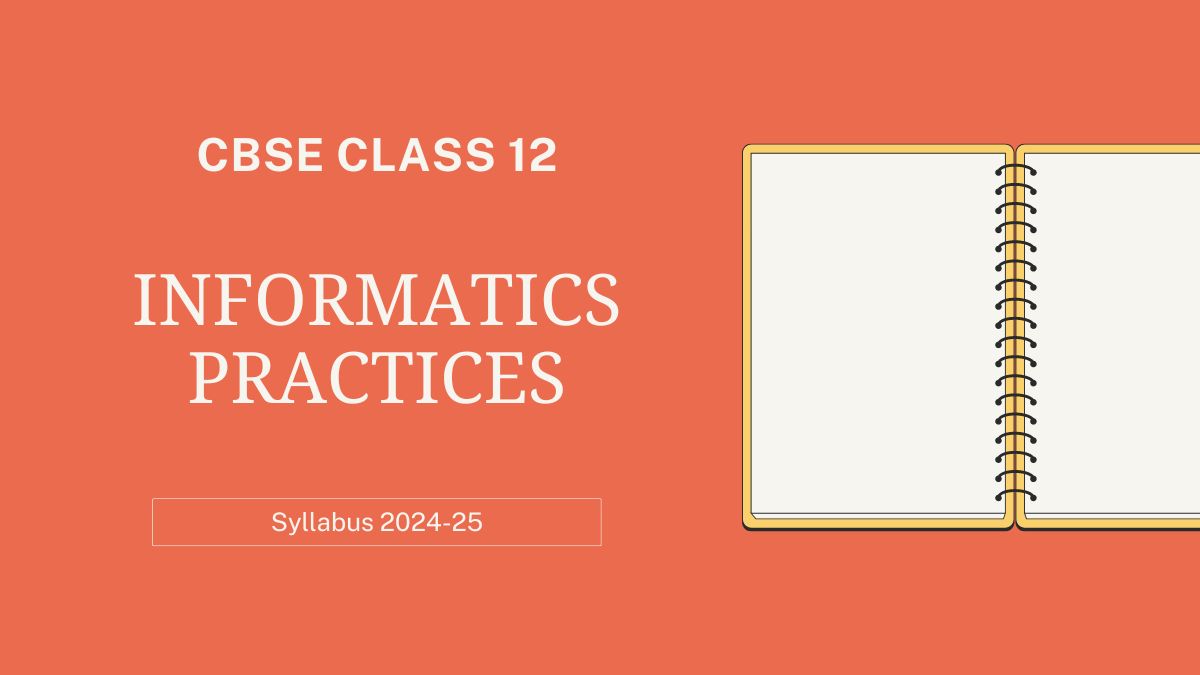CBSE Class 12 Informatics Practices Syllabus 2024-25
Apart from technical skills, the syllabus introduces essential topics related to computer networks, internet technologies, and societal impacts of digital advancements. It covers the basics of different network types (like LAN, WAN, and PAN), devices, and internet protocols, while also shedding light on issues such as digital footprints, data protection, and cyber laws. The project work encourages students to apply their learning in real-world scenarios by analyzing and visualizing data or developing useful applications. Through practical exercises, the syllabus ensures that students gain hands-on experience, equipping them with the necessary skills for future academic or professional endeavors in IT and data management.
Learning Outcomes:
By the end of this course, students will be able to:
- Create and work with Pandas Series and DataFrames, applying various operations.
- Visualize data using relevant graphs.
- Design SQL queries using aggregate functions.
- Import and export data between SQL databases and Pandas.
- Understand key networking and internet terminology.
- Identify internet security issues and configure browser settings.
- Recognize the impact of technology on society, including gender and disability issues.
1. Distribution of Marks and Periods:
| Unit No. | Unit Name | Marks | Theory Periods | Practical Periods | Total Periods |
|---|---|---|---|---|---|
| 1 | Data Handling using Pandas and Data Visualization | 25 | 25 | 25 | 50 |
| 2 | Database Query using SQL | 25 | 20 | 17 | 37 |
| 3 | Introduction to Computer Networks | 10 | 12 | – | 12 |
| 4 | Societal Impacts | 10 | 14 | – | 14 |
| Project | – | – | 7 | 7 | |
| Practical | 30 | – | – | – | |
| Total | 100 | 71 | 49 | 120 |
2. Unit-wise Syllabus:
Unit 1: Data Handling using Pandas and Data Visualization
- Introduction to Python libraries: Pandas, Matplotlib.
- Data Structures in Pandas:
- Series: Creation from ndarray, dictionary, scalar values. Operations: mathematical functions, head and tail functions, selection, indexing, and slicing.
- DataFrames: Creation from dictionaries of Series, list of dictionaries, Text/CSV files. Display, iteration, and operations on rows and columns like add, select, delete, and rename. Head and tail functions, indexing using labels, Boolean indexing.
- Import/Export: Importing/exporting data between CSV files and DataFrames.
- Data Visualization: Purpose of plotting. Creating and saving line plots, bar graphs, and histograms using Matplotlib. Customizing plots with labels, titles, and legends.
Unit 2: Database Query using SQL
- Revision: SQL commands and concepts from Class XI.
- Functions:
- Math Functions: POWER(), ROUND(), MOD().
- Text Functions: UCASE()/UPPER(), LCASE()/LOWER(), MID()/SUBSTRING()/SUBSTR(), LENGTH(), LEFT(), RIGHT(), INSTR(), LTRIM(), RTRIM(), TRIM().
- Date Functions: NOW(), DATE(), MONTH(), MONTHNAME(), YEAR(), DAY(), DAYNAME().
- Aggregate Functions: MAX(), MIN(), AVG(), SUM(), COUNT(), using COUNT(*).
- Queries: Group by, Having, Order by. Working with two tables using equi-join.
Unit 3: Introduction to Computer Networks
- Introduction to Networks:
- Types of Networks: PAN, LAN, MAN, WAN.
- Network Devices: Modem, hub, switch, repeater, router, gateway.
- Network Topologies: Star, Bus, Tree, Mesh.
- Internet Introduction: URL, WWW, and applications (Web, email, chat, VoIP).
- Website: Differences between websites and web pages. Static vs dynamic web pages, web servers, and website hosting.
- Web Browsers: Commonly used browsers, browser settings, add-ons, plug-ins, cookies.
Unit 4: Societal Impacts
- Digital Footprint: Net and communication etiquette, data protection.
- Intellectual Property Rights (IPR): Plagiarism, licensing, and copyright.
- FOSS: Free and open-source software.
- Cybercrime: Cyber laws, hacking, phishing, cyberbullying, and the Indian IT Act.
- E-waste: Hazards and management.
- Health Concerns: Awareness of health issues related to technology usage.
Project Work:
The goal of the project is to develop a useful IT application by identifying real-world problems. For example, students can visit shops, businesses, or organizations to explore how they generate, store, and manage data.
Project Guidelines:
- Analyze data from CSV or databases using Python libraries and create visualizations.
- Avoid plagiarism and respect copyright rules.
- Projects can be done individually or in groups (2-3 students). Start at least six months before the submission deadline.
Practical Marks Distribution:
| S. No. | Unit Name | Marks |
|---|---|---|
| 1 | Programs using Pandas and Matplotlib | 8 |
| 2 | SQL Queries | 7 |
| 3 | Practical file (including 15 Pandas programs, 4 Matplotlib programs, and 15 SQL queries) | 5 |
| 4 | Project Work (based on concepts from Class XI and XII) | 5 |
| 5 | Viva-Voce | 5 |
| Total | 30 |
5. Suggested Practical List:
5.1 Data Handling:
- Create a Pandas Series from a dictionary and ndarray.
- Given a Series, print elements above the 75th percentile.
- Create a DataFrame for quarterly sales by category and item, then group by category to display total expenditure.
- Create a DataFrame for exam results, showing row/column labels, data types, and dimensions.
- Filter out rows based on different criteria, including duplicate rows.
- Import and export data between Pandas and CSV files.
5.2 Visualization:
- Analyze school results data based on different parameters (e.g., subject-wise, class-wise).
- Analyze and plot appropriate charts with titles and legends using Matplotlib for the DataFrames created above.
- Aggregate and summarize open-source data (e.g., from data.gov.in) and plot using Matplotlib.
5.3 Data Management:
- Create a student table with
student_id,name, andmarks, wherestudent_idis the primary key. - Insert a new student’s details into the table.
- Delete a student’s details from the table.
- Select students with marks above 80.
- Find the minimum, maximum, sum, and average marks in a student marks table.
- Use
GROUP BYto find the total number of customers from each country in a customer table. - Order the student table by marks in descending order.
CBSE Class 12 Informatics Practices Syllabus 2024-25 PDF Download
For more detailed and downloadable information on the CBSE Class 12 Informatics Practices Syllabus 2024-25, you can access the PDF version directly from the official CBSE website or via the link given below.
CBSE Class 12 Informatics Practices Syllabus 2024-25-Click Here To Download PDF
Related Articles:

